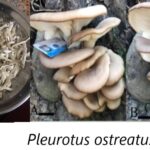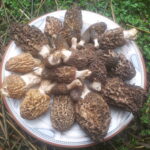Mushrooms are well-known due to the presence of bioactive compounds and applications in traditional medicines. Flammulina velutipes is used as a source of traditional medicines. The extract obtained from the species is used for the preparation of alcohol. Water extract of Flammulina velutipes contains a valuable number of polysaccharides when purified and studied through column chromatography. These polysaccharides are helpful in enhancing the immune activity and release of nitric oxide to suppress the tumor cell growth in macrophages. A novel polysaccharide FVP1 also showed effective results against HBV infection (Zhang et al., 2018).
Cordyceps sinensis, (winter worm or summer grass) in most of the Himalayan region is a most famous and highly popular fungus among the rural and scientific societies due to its medicinal importance. Cordyceps sinensis contains many bioactive components including polypeptides, Dipeptides, amino acids, proteins, and different sterols. All these bioactive substances are well known due to their anticancer, antioxidant, and immunomodulatory functions (Liu et al., 2015).
Different common edible mushrooms like Boletus edulis, A. rubescens, S. crispa, G. arenicola, and M. deliciosa are good in natural antioxidants, phenolic compounds, minerals, and other nutrients (Lalotra et al., 2018).
Boletus edulis, is a common medicinal mushroom collected by rural communities as a source of food. Many aromatic compounds have been identified from Boletus edulis. Solvent-assisted flavor evaporation (SAFE) was used for the collection of fractions and aroma extract dilution analysis (AEDA) coupled with mass spectrometry. Predominant odorants determined were 3-(methylthio) propanol, 1-octen-3-one, and pyrazines. Characterization and comparison of the extracted compounds were made to study their significance (Zhang et al., 2021).
Medicinal fungi like Ganoderma lucidum are well-known herbal mushrooms used for centuries by different tribes as an alternative traditional medicine to promote health and treat specific disorders. This mushroom contains many bioactive compounds, chemo-preventive agents, and immune-modulatory and anticancer drug substances (Peng et al., 2023).
Different mushrooms have been identified with secondary metabolites significant to improving human health and agriculture as well. Mushrooms have important antioxidant and biologically active compounds and used worldwide since ancient times in traditional medicines. They contain health-promoting and immune-stimulating properties. Edible mushrooms, like Cantharellus cibarius and L. deliciosus are well-known due to their antioxidants and important functional compounds. Different functional bioactive compounds Cardiac glycosides Anthraquinones, flavonoids, Tannins, Terpenoids, and proteins were reported from mushrooms. Mushrooms are rich in antioxidant compounds like flavonoid and tannins.
Several edible fungi were found to possess good antibacterial activities against Staphylococcus aureus . Agaricus blazei is a well-known medicinal mushroom due to its anti-inflammatory activity. It was reported that Hericium erinaceus contains different bioactive compounds with reported uses for brain and nerve health. The medicinal fungus Hericium erinaceus has been reported to have neuroprotective, neuronal growth, and health benefits (Wong et al, 2012). Pleurotus species are one of the most popular mushrooms collected and consumed as food. It has many bioactive substances with biological activity (Bellettini et al., 2019). Water extract of Chaga mushrooms contains potent anticancer compounds used in the treatment of cancer in different countries (Arata, et al., 2016).
Morels (Morchella species are popular edible fungi with many health-promoting, antioxidant, and anti-aging properties. These are rich in nutrients and cultivated for food medicines worldwide.







